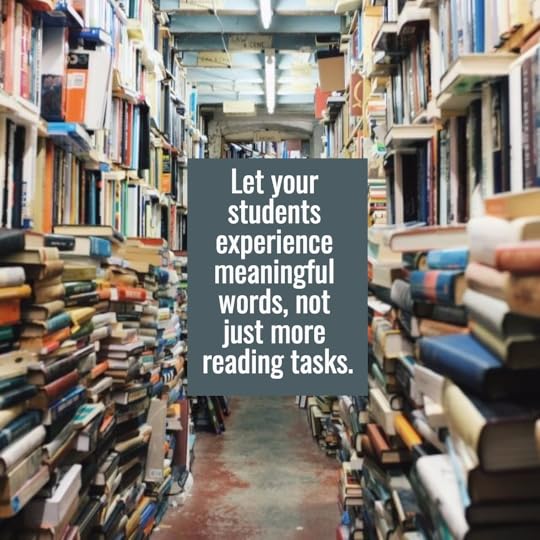On Creating Reading Experiences

They groan when I tell them about the Signposts.
“Another thing to write about, Mrs. Ripp?”
“Do we have to?”
“Why can’t we just read?”
Their post-its hang behind me, reminding me of all they have said about what kills their love of reading.
And I get it, we, meaning educators, have written reading to death. With every post-it, every jot, every stop and think, every time we ask them to do more work and forget about the virtues of aesthetic reading as discussed by Louise Rosenblatt, we make them dislike it more. In our eagerness to help kids become better readers, we have made the kids drown in their post-it notes. We have broken meaningful stories into such small tasks so that the very meaning that made the story worth our time is gone. We have forgotten about the purpose of all this instruction it seems; to create literate human beings that can grow from what they read, both intellectually, but also on a heart level.
Yes, we need to teach skills, of course, we do. But we also have to let the kids use those skills in meaningful ways. We have to let them practice too without telling them to use post-its, without telling them to write down, without telling them to look for specific things, because if we don’t, we don’t know if they will ever be able to do it without our prompts, our scaffolds, our tasks. We have to remind them, and ourselves, that when we read it is not just to complete a task attached to it. That the task is just a practice for the real deal; for when we read and we have an experience with the text.
So I tell them not to worry. The signposts, or any other skills we review or learn are just tools. Tools to use when it makes sense. Tools to use so they can complete the tasks that we do need to do at times. Practice them so they become habit when we need them but that it is also okay to just read and let the movie flow in our heads to the point where the rest of the world falls away and all we can focus on is how close we are getting to the end of the book.
So let your students experience meaningful words, not just more reading tasks. Let them experience what it means to read and then feel something. Let them experience what it means to read and sit in silence. Let them read and get to the end and then discuss what the text made them think of, not just a few skills you have just taught, not just the repertoire of tools they may have. Balance is needed in all of our classrooms for the purposes of reading, our students are telling us this loudly if we will only listen.
If you like what you read here, consider reading my newest book, Passionate Readers – The Art of Reaching and Engaging Every Child, out August 2017. This book focuses on the five keys we can implement into any reading community to strengthen student reading experiences, even within the 45 minute English block. If you are looking for solutions and ideas for how to re-engage all of your students consider reading my very first book Passionate Learners – How to Engage and Empower Your Students. Also, if you are wondering where I will be in the coming year or would like to have me speak, please see this page.
Filed under: Be the change, being a teacher, Literacy, Reading, Reading Identity





